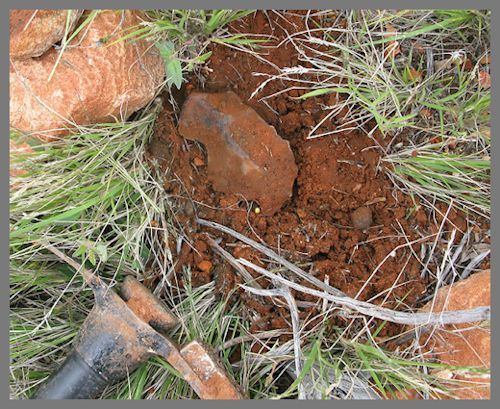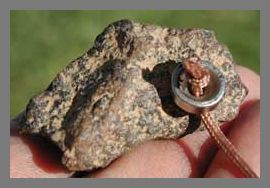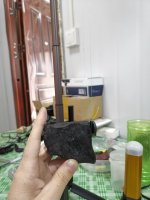okstone
Jr. Member
- Apr 19, 2020
- 32
- 18
- Primary Interest:
- Other





Hi Okstone and welcome to the forum.
The outside is quite like a meteorite in appearance, but earth rocks can look like that too. Inside, I can see no chondrules, no flecks of metal, no crystalline structures or other inclusions which would suggest a meteorite. Just some patches of indicating it doesn't have a homogeneous composition. If it is only weakly magnetic, for a meteorite it would have to be an achondrite. I have seen achondrites with a similar appearance, but also many more ordinary earth rocks with the same appearance. The only way you can be sure is by having a professional laboratory or scientific institution do some further testing. But I think they will probably say this is a volcanic rock.
The density is just a little higher than most volcanics, except for those which have iron minerals such as hematite and magnetite as part of their composition. That would explain why it is slightly magnetic as well as giving a higher density. This is not unusual for volcanic rocks.
The inside of the second rock found nearby does not have the typical appearance of a meteorite. There appear to be some fissures which look more like cooling cracks than impact shock features and I believe I can see some 'banding' indicating molten flow. I would be pretty sure this is igneous/volcanic and not a meteorite.

It can be slightly attracted by a magnet. I mean that I use a thin wire to tie a small magnet and use this sample to approach the magnet. It can be slightly attracted, which proves that there are very few magnetic substances in stone. So the effect of magnetite / Hematite / metal on the density of this stone is very limited.Like this:
You said your rock has an SG of 3.4
Basalt, for example, has typical SG up to about 3.0 but iron and iron-bearing minerals are much higher. The mineral hematite, for example, has an SG of 5.26, so it doesn't take very much hematite as a secondary mineral to push the specific gravity of volcanic rocks beyond 3.0
Contrary to popular belief, hematite itself is NOT magnetic (ie not attracted to a magnet). When it does exhibit magnetism it's because it often has small amounts of magnetite associated with it, and the degree of magnetism is directly proportional that content.